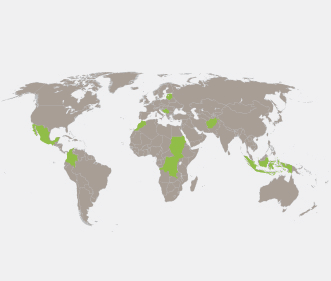New blog post by SSR Resource Centre Blog Contributor Alison Bottomley discusses gender constructs in DDR and SSR and how these perceptions may be influencing the way we approach post-conflict reconstruction.
Mainstreaming gender is a crucial practice in post-conflict reconstruction (PCR) but how practitioners understand gender is preventing gender equity rather than ensuring it. Gender is a socially constructed designation, as opposed to sex which is a biological fact. Because gender is socially constructed, these constructions inform how people will understand issues relating to gender. This means that in PCR, gender constructs within gender mainstreaming programs will determine how gender groups are handled. Unfortunately, the presence of unchallenged gender constructs leads to assumptions that marginalize gender groups, particularly when identifying the victims and perpetrators of violence.
Gender mainstreaming was conceived in the 1990’s as a means of bringing gender into all aspects of policy and programming work. The intent was to ensure that policy makers, practitioners and institutions consider how their decisions may have a gendered effect. The Beijing Platform of Action in 2000 significantly promoted gender mainstreaming as it called for governments and actors to promote a gender perspective in policy making and programming. In 2000, United Nations Security Council Resolution 1325 further validated gender mainstreaming by supporting it as a means to encourage greater consideration of women in conflict prevention, resolution and the peace-building process.
The promise and potential of gender mainstreaming is significant for post-conflict transitions where such programming can greatly change realities for marginalized groups, particularly women. Yet gender mainstreaming appears to have its own limiting gender realities. Gender mainstreaming can be gender biased itself because of unchallenged gender constructs that prescribe who inflicts violence. Conventional logic is that men are the perpetrators of violence while women are victims. Empirically, this is often the case, but this assumption entrenches a paradigm of males as perpetrators and females as victims that marginalizes both men and women in PCR.
Constructing females as victims marginalizes women in the peace process. Peacebuilding literature has a tendency to “disproportionately portray women as victims.” As a result, women and girls become defined by their victimization while their contributions to the war effort and the social change they shaped during the conflict are dismissed. For example, women were notably excluded from peace settlement negations in Burundi, Sierra Leone, Sudan and Kosovo. Excluding women from peace negotiations is rationalized by stereotyping women as passive victims who have suffered in warfare but did not actively participate in the conflict. Female armed combatants are an increasingly visible example of this problem; gender mainstreaming and disarmament, demobilization and reintegration (DDR) programs in particular have been criticized for not including female soldiers or ‘bush wives.’ When women are acknowledged in the peace process, they are often reduced to the construct of a ‘peacemaker,’ mother figure or war widow. These limiting identities deny women active roles in the peace process and overall peacebuilding. For women and girls to be fully involved in securing peace post-conflict, they must be considered as actors and not merely victims.
Men and boys are also marginalized by gender constructs that fail to recognize the possibility of male sexual victimization. While the majority of sexual violence is inflicted on women or girls, men and boys can be victimized themselves, whether by rape as a weapon of war in situations of detainment or interrogation, being forced to observe, or coerced to participate in acts of sexual violence. Male sexual victimization exists in the majority of all conflict situations; yet the emphasis on viewing males as perpetrators of sexual violence marginalizes the men and boys who experience sexual violence during or after conflict.
One visible outcome is the failure of DDR programs that rarely consider male victimization. Male members of armed forces are likely susceptible to sexual violence often during conscription/ abduction into armed forces. For example, a 2008 study in Liberia of 1666 adults found that out of 367 male former combatants 32.6% had experienced sexual violence and that 81% of these survivors had PTSD symptoms. Such quantitative studies are rare because practitioners and researchers rarely consider males as anything other than perpetrators in their work. If such unchallenged gender constructs continue, then gender mainstreaming will continue to exclude the men and boys who deserve assistance.
For gender mainstreaming to realize its full potential and to transform gender realities in post-conflict situations, gender constructs cannot remain unchallenged. The paradigm of males as perpetrators and females as victims both denies women and girls agency in the peace process while obscuring needed attention to how men and boys can be victimized by gendered violence. PCR practitioners and those in the SSR field in general should consider the presence of gender constructs within their own work so that gender marginalization is not a reality of gender mainstreaming.
Alison Bottomley is a graduate of the Masters in Global Governance (MAGG) program at the Balsillie School of International Affairs. She is currently working in the partnerships department at CIVICUS: World Alliance for Citizen Participation in Johannesburg, South Africa.
Tags: DDR, gender mainstreaming, SSR





 Visit the Centre for
Visit the Centre for